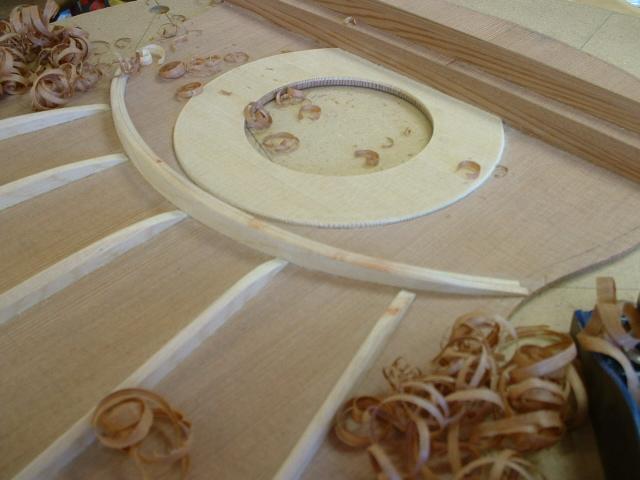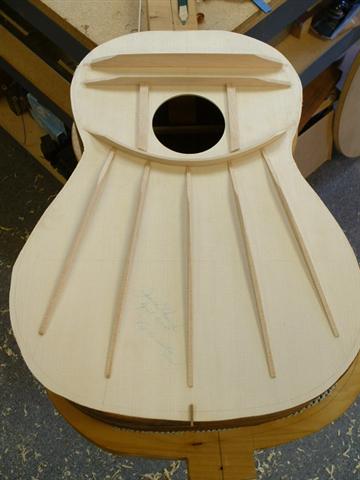[QUOTE=Graham Steward] From the picture it looks like you bent 2 thin pieces and then glued them together.[/QUOTE]
Hi Graham,
Yes, that's what I did in the first top pictured. It's actually a sandwich of spruce/.010 graphite/spruce, on a redwood top.
The second one pictured was bent from a single, taller piece of spruce, on an Italian spruce top. It's also moved a little closer to the soundhole.
I'm now doing a combination of both: a "sandwich" like shown in pic#1, but thinner and taller, and moved closer to the soundhole, like pic#2.
Best,
Jim
|




